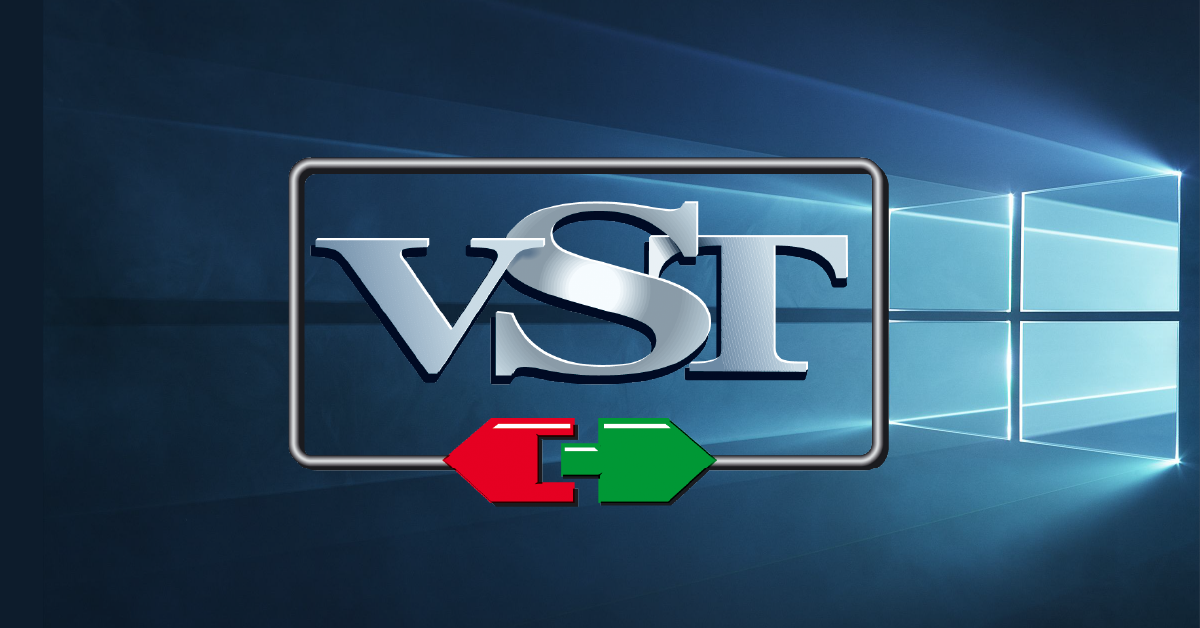How do I add a VST plugin into a Windows DAW?

What is a VST plug-in and how do I use it?
In this guide, we will describe what VST plug-ins are, where VST plug-ins are installed, and also how to add them in your DAW. Follow the sections below to get started.
- What are VST plug-ins?
- What folders are my VST plug-ins installed?
- How to add a VST plug-in into your DAW
- How to use VST plug-ins
What are VST plug-ins?
VST, which stands for Virtual Studio Technology, is a plug-in format that was created in 1996 with the release of Cubase 3. Since then, VST plug-ins have become an industry standard and are compatible with most DAW’s. VST’s were initially only compatible with the Windows OS, but they are now compatible with Mac as well. The latest version is VST 3.0. However, some VST 2.0 and VST 2.4 are still compatible with most DAW’s.
- While VST 2.0 and 2.4 can still be used, 32-bit versions are becoming obsolete; particularly with newer versions of DAW’s. 64-bit VST 3 versions are recommended for compatibility.
What folders are my VST plug-ins installed?
Unless you have installed your VST plug-ins to a custom folder, the standard installation path for plug-ins can be in one of many locations on Windows. If you can’t seem to find a plug-in or virtual instrument VST within your DAW, the first thing to do is check the folder locations below and see if the .dll or .vst3 file is there. If the VST plug-in is there, but still isn’t loading in your DAW, it may not be compatible, and you will need to re-install the correct version of the plug-in.
VST 2 plug-in location (.dll file extension):
- C:\Program Files\VSTPlugins
- C:\Program Files\Steinberg\VSTPlugins
- C:\Program Files\Common Files\VST 2
- C:\Program Files\Common Files\Steinberg\VST2
- C:\Program Files (x86)\Steinberg\VstPlugins (For 32-bit plugins on 64-bit version of Windows)
VST 3 plug-in location (.vst3 file extension):
- C:\Program Files\Common Files\VST3
- C:\Program Files (x86)\Common Files\VST3 (For 32-bit VST 3 plug-ins on 64-bit versions of Windows)
Learn more about the differences between VST 2.4 and VST 3.0 and how it impacts your plug-in work flow.
How to add a VST plug-in into your DAW
Most DAW’s will set one or multiple locations mentioned above as the default plug-in scan location. If you’ve just installed a plug-in, however, you may need to refresh your plug-in list or restart your DAW. Click the name of your DAW to skip to its specific instructions on how to add a VST plug-in.
Cubase and Nuendo
- Navigate to Studio on the top bar, then click VST Plug-in Manager.
- Click the Cog icon, then click the + sign.
- Select Add Location, navigate to where you installed your plug-in(s) to then click the Refresh icon.
How to Manage Plug-ins in Cubase
Studio One
- Click Studio One in the top toolbar, and select Locations.
- Next, click the VST Plug-ins tab, click Add, and navigate to where your plug-ins are installed.
- Click OK and restart Studio One.
Ableton Live
- Go to Options, click Preferences.
- Select Plug-ins, click Browse, and navigate to where you installed your plug-in(s).
- Be sure that Custom and System folders are on.
FL Studio
- Click Options and select Manage plugins.
- Click the Folder + icon in the Plugin search paths section, select the location(s) where your plugin/virtual instrument is installed, and then click OK.
- To disable a plugin path, click the checkmark located to the left of it. The default FL Studio plugin paths cannot be disabled.
- Click Find Plugins to begin scanning. Once complete, your plugin will now be available to use.
How to Use Plug-ins in FL Studio 20
Reason
- Click Edit and select Preferences.
- Click Advanced, click Add in the VST section, and navigate to where your plug-in(s) are installed.
- Reason automatically scans for plug-ins once you select the folder.
Cakewalk
- Click Edit and select Preferences.
- Go to VST Settings, click Add in the VST Scan Paths section, and navigate to where your plug-in(s) are installed.
Reaper
- Go to Options and select Preferences.
- Select VST, click Edit, and select Add.
- Navigate to the folder where your plug-in(s) are installed, and click Rescan.
Sound Forge and Vegas Pro
- Click Options, then go to Preferences.
- Select VST Effects click Browse, then navigate to where your plug-in(s) are installed.
Adobe Audition
- Select Effects and click Audio Plug-In Manager.
- Click Add, select Scan for plug-ins, then navigate to where your plug-in(s) are installed.
Sibelius
- Go to Playback Devices and click Audio Engine Options.
- Select Folders, then navigate to where your plug-in(s) are installed.
- Close and relaunch Sibelius.
Finale
- Click MIDI/Audio Device Setup.
- Go to Manage VST Plug-in Directories and click Add.
- Navigate to where your plug-in(s) are installed, then click Rescan.
Acid Pro
- Go to View and navigate to Plugin Manager.
- Select Configure VST and click Add.
- Navigate to where your plug-in(s) are installed, then click Scan.
Digital Performer
IMPORTANT: VST plug-ins for Digital Performer must be in one of the following file paths:
- C:\Program Files\VSTPlugins
- C:\Program files\Steinberg\VstPlugins\
- C:\Program files\Common Files\VST2
- Click Edit in the top toolbar, then select Preferences.
- Click Audio Plug-ins, select plug-in and click Enable.
How to use VST plug-ins
Now that you know how to add VST plug-ins in your DAW, we’ll show you how to use VST plug-ins. Once you’ve installed them and they’ve been scanned within your DAW, you can then add them to your track. Effects plug-ins are straightforward as all you need to do is add it as an Insert on the audio or virtual instrument track. VST effects plug-ins cannot be added to MIDI tracks.
A virtual instrument plug-in is typically known as a VSTi (Virtual Studio Technology Instrument). Unlike effects plug-ins which can be inserted, you’ll need to create a dedicated instrument track for it to load. Once created, you can then use it.
VST plug-in tips
VST effects plug-ins and virtual instruments are very powerful tools in the studio and can turn a good mix into a professional mix in no time. That being said, some plug-ins and virtual instruments take up a lot more processing power than others, so take these performance tips into consideration when you use VST plug-ins.
- If you’re using the same plug-in on multiple tracks, you can route those tracks to a bus and just add one instance.
- If your virtual instrument has a multi-out (multiple output) feature and you want to use multiple sounds, create one MIDI track per additional sound, then set the MIDI channel on the virtual instrument to match that of the track you just created. This way you only have one instance of the virtual instrument, but are triggering multiple sounds at the same time.
- Temporarily freeze or disable plug-ins on tracks that aren’t being used. This will increase performance, and you won’t experience dropouts, clicks, or pops.
When you need help, Sweetwater has the answers!
Our knowledge base contains over 28,000 expertly written tech articles that will give you answers and help you get the most out of your gear. Our pro musicians and gear experts update content daily to keep you informed and on your way. Best of all, it’s totally FREE, and it’s just another reason that you get more at Sweetwater.com.



